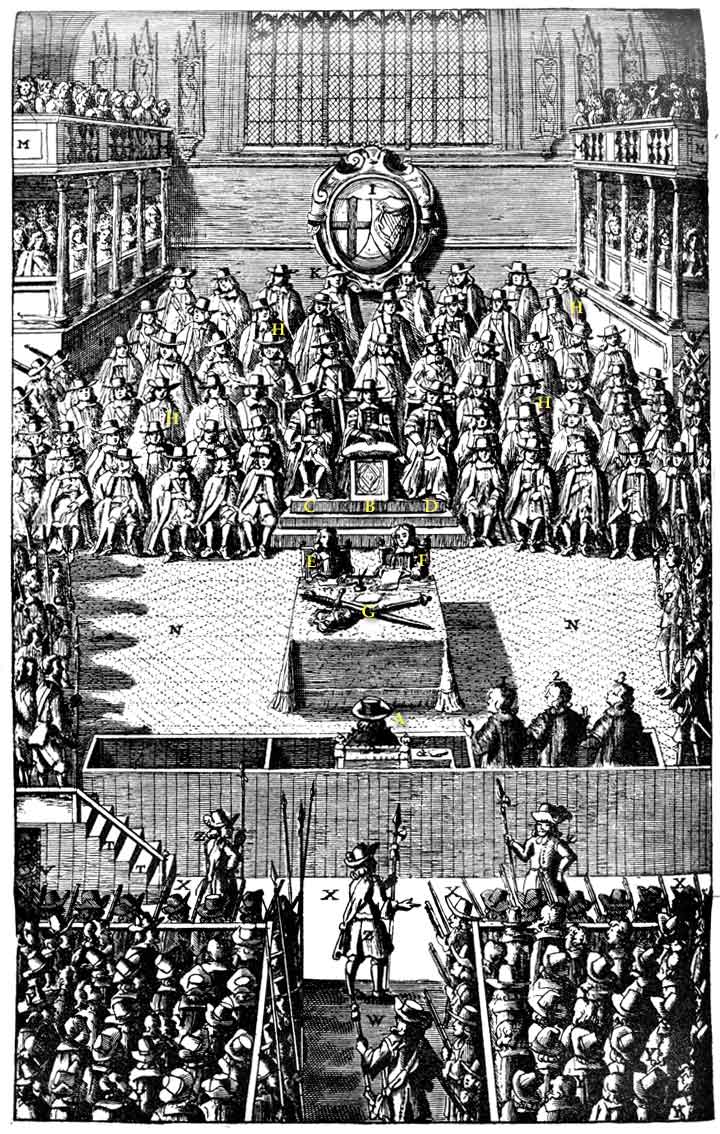 |
| Portrait of Charles I by Anthony van Dyck |
 |
| Charles is put on trial |
 |
| Charles II in Coronation robes by John Michael Wright |
marked by disasters. In 1665 the ‘grievous Visitation’ known as the Great Plague decimates the population of London. In 1666 the Great Fire of London destroys the capital, including the Gothic cathedral of St. Paul’s. And in 1667 the Dutch sail up the Thames in the final act of the Anglo-Dutch naval war which ends in an English defeat. Also in the 1660s Admiralty Clerk of the Acts Samuel Pepys begins writing his famous Diary. In 1672 another Dutch war begins, and in the same year Charles issues a Declaration of Indulgence granting tolerance to all including Catholics. This is too much Parliament, particularly as the heir to throne is Charles’s brother James, the Duke of York, and a Catholic. The king is forced into a U-turn, and for the first ever a monarch has to accept a minister from Parliament, the Earl of Danby, a staunch Anglican who had arranged the marriage between the Duke of York’s Protestant daughter Mary, to William of Orange, Charles’s nephew. In 1678 the informer Titus Oates swears to have uncovered a Popish plot to murder the king and put the Catholic Duke of York on the throne. Innocent Catholics lose their lives as a result of Oates’s
.jpg) |
| Period playing card depicting the execution of the Duke of Monmouth |



No comments:
Post a Comment